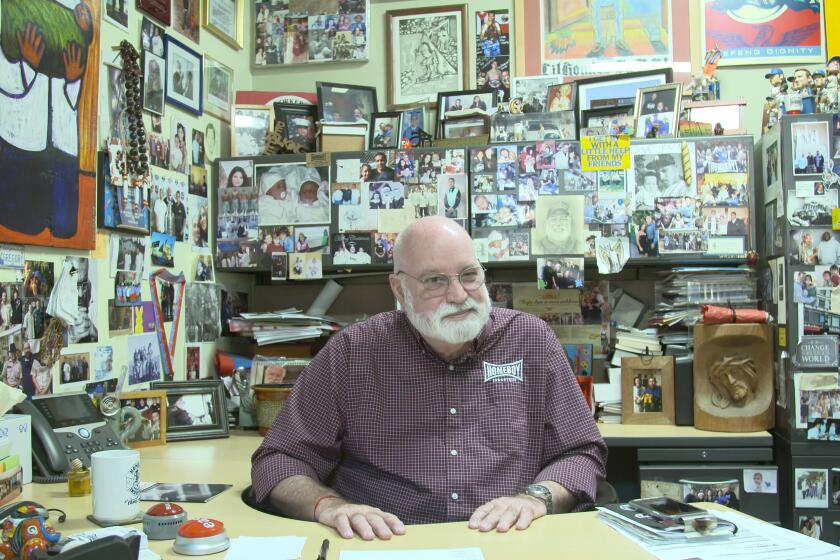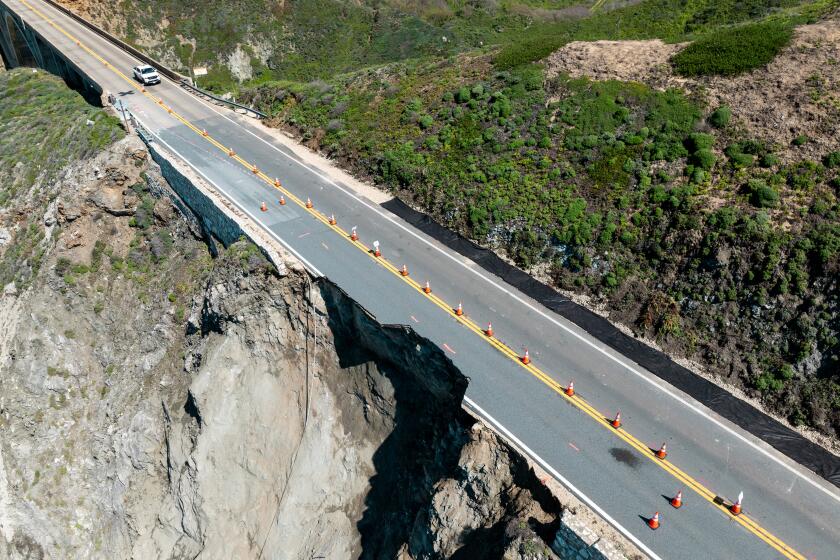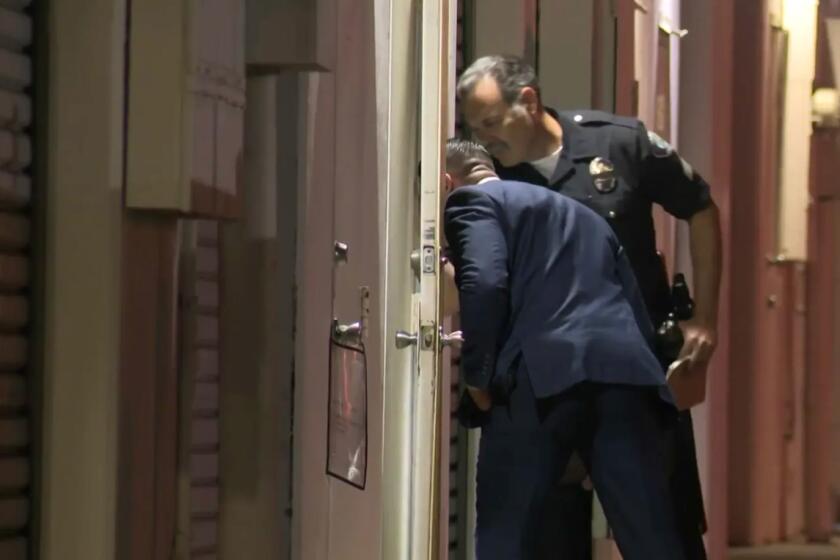Carson Moves to Plug Leak at City Hall
In Carson, city officials worry about serious leaks in City Hall. Not the unauthorized release of information, although that has also troubled officials recently.
No, the current flap is about the real thing--water.
In particular, seepage through the basement wall in the computer room now runs about 300 gallons a day after a rain--enough to fill six standard bathtubs.
The council voted last week to award a construction contract of up to $57,230 to the Harris Co. of San Clemente to fix the problem.
Longstanding Problem
The leaks, which have plagued City Hall off and on ever since it was built in 1976, have worsened recently and now pose serious dangers to employees, according to Howard Homan, the city parks and recreation director who is responsible for maintenance of City Hall.
In the computer room, wiring lies on the floor about a yard from the exterior wall that leaks. After a rain, employees put down rags and paper towels along the wall and then must wring them out every hour, Homan said in an interview.
“You can’t go on the rest of your life depending on rags and paper towels,” he said.
At the council meeting, Homan said, “It is an emergency that we solve this problem. We put these operators in the computer room in jeopardy every time that room floods with all that electrical equipment in there.”
A consultant hired by the city to evaluate the problem put the city “on notice . . . that we are operating a dangerous condition,” Homan said. He added that Cal/OSHA, the state agency in charge of worker safety, is also monitoring the problem and concurs with the city’s program of solving it.
No one knows for sure what is causing the seepage. One possibility is a break in underground drainage pipes. Another, which Homan said he believes is the likely culprit, is an underground soil condition resulting from improper work when the building was constructed.
Homan said that a compacted soil ramp was used to haul dirt out of the basement excavation during construction and now--covered over but still in place--could be acting as a funnel for rain water percolating through fill that was not properly compacted. The ramp ended where the basement wall is located.
Testing of drainage pipes has not revealed any breaks so far. One factor leading him to suspect the soil ramp, Homan said, is that the leaks typically start about one day after a rain, which would be about the length of time required for water seeping through topsoil to reach the ramp.
Suit Possible
At Monday’s meeting, Councilman Michael I. Mitoma asked City Atty. Glenn Watson whether the city could sue the soil engineer. Watson replied that such a suit could not be ruled out.
Homan said that the Harris Co., which was the only firm bidding on the project, will dig to the basement’s foundation and examine and test drainage pipes. If no breaks are found, the firm will build a trench at the base of the basement wall, install a drainage pipe and fill the trench with rock to permit easy water flow. Water flowing into the drain pipe will be pumped into storm drains.
Homan said he is convinced that the trench and drainage pipe will solve the problem.
More to Read
Start your day right
Sign up for Essential California for news, features and recommendations from the L.A. Times and beyond in your inbox six days a week.
You may occasionally receive promotional content from the Los Angeles Times.






